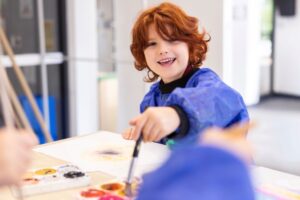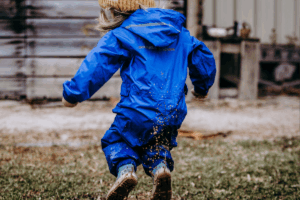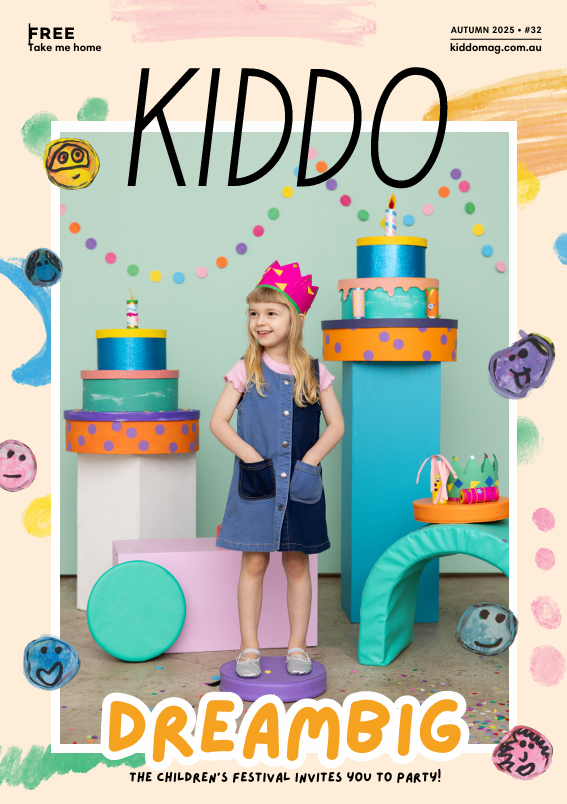I don’t want you to go! Children who feel anxious when apart from parents/caregivers
Separation anxiety is the most commonly diagnosed anxiety disorder in children with approximately 4-5% of children ‘meeting the criteria’ for a separation anxiety disorder.
We asked Developing Minds to talk us through possible causes and how to help children who feel anxious when apart from their parents or care givers.
Tina is in year 1, lives with her Mum and her older brother, and is very anxious about going to school. This issue has been a challenge for Tina and her Mum for some time – from kindergarten onwards.
However since starting year 1, Tina has become even more anxious. Every school morning, while Mum tries to convince her that she will be okay at school, she cries, yells, says she is sick, throws things, says “I hate you so much” and hits her Mum. Sometimes she vomits. Tina gets a stomach ache and headache most afternoons when she thinks about school the next day.
Tina is now only going to school once a week and has missed over 50 days of school this year.
As well as being anxious about going to school, Tina also feels uncomfortable staying with her grandparents when Mum goes out on the weekend, and does not want her Mum to leave when she goes to other children’s houses to play.
Does any of this sound familiar?
Although this description of Tina is not one of a “real child”, it is a very typical description of many children we see and work with who have what we would call separation anxiety and school avoidance.
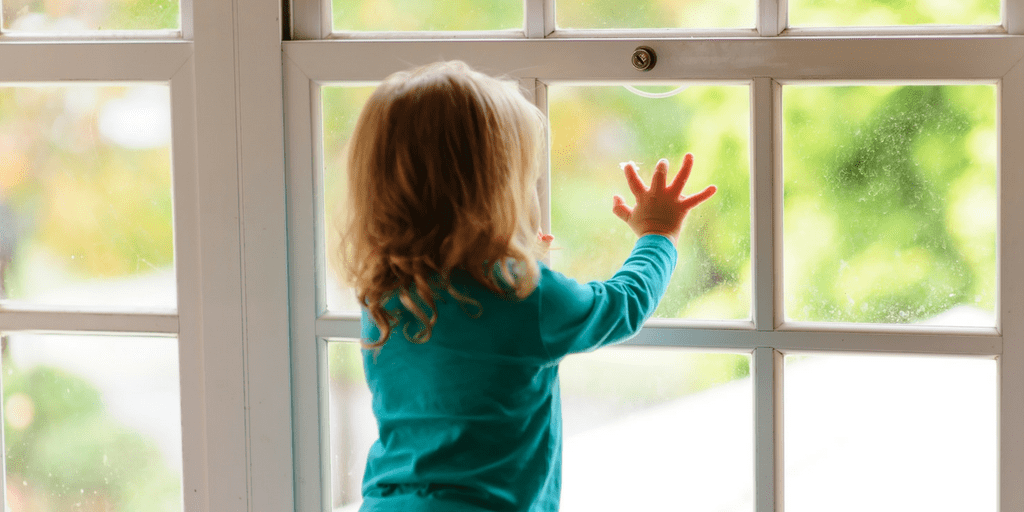
What is separation anxiety and how common is it?
Separation anxiety is defined as “developmentally inappropriate and persistent distress about being apart from home or love ones”
There are three important words in this definition:
- “developmentally”
- “inappropriate”
- “persistent”
All of these are needed for a child to be given a diagnosis of separation anxiety.
In contrast, it is “developmentally appropriate” for babies, toddlers and younger children to be upset about being asked to spend any time apart from parents/caregivers, and also for older children to feel this way at least some of the time.
However some children get more distressed more often than what is typical for a child’s age and culture, it happens very often or all the time, and it causes a great deal of stress for them and their family. In these cases separation anxiety is often diagnosed.
Approximately 4-5% of children will ‘meet the criteria’ for a separation anxiety disorder. It is the most common anxiety disorder diagnosed in children.
One child’s separation anxiety may be different from another child’s separation anxiety
If you are a parent reading this and have a child who gets anxious when they are apart from you, please note that separation anxiety exists on a spectrum.
This means there are many children feel slightly anxious about being away from their parents/caregivers. These are often kids who find it hard to go to school on Mondays, or after the holidays, don’t like going to sleep-overs or camps and need a lot of reassurance when their parents/caregivers go out. However they do ultimately manage these situations (although sometimes with extra reassurance, practice and gentle encouraging).
In contrast, at the other end of the spectrum, there are some children who have a very severe form of separation anxiety disorder.
These children (and sometimes teens) – when faced with the idea of being apart from parents/caregivers will have much stronger experiences and reactions. Like the story of Tina above they will often vomit, have severe stomach pain or headaches, scream/yell, have a panic attack, sob, hit, kick or punch others. They are terrified, distressed and desperate.
I make this point because if parents/caregivers have a child with milder separation anxiety, which has resolved or been managed, it is easy to think that if other parents/caregivers “just” use one or two of the strategies which have been helpful for them – then it will go away. In contrast, supporting a child with severe separation anxiety is often a complex and really tough job without any easy or quick solutions.
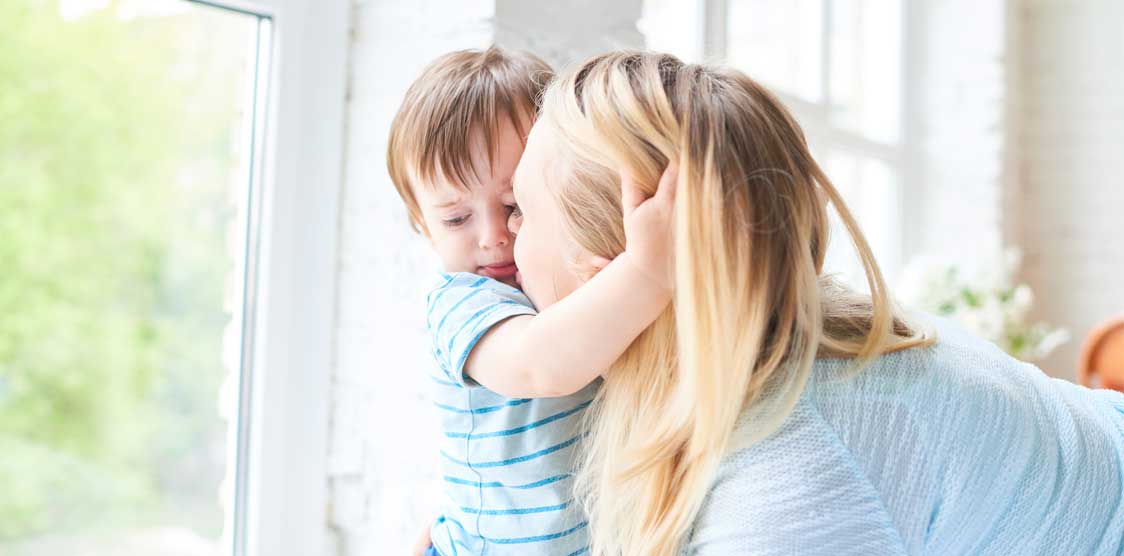
What causes some children to be anxious about being apart from their parents/caregivers?
Like all emotional health challenges, there is no one factor we can say which causes separation anxiety. However here are the three main categories of factors which are often involved in anxiety generally, and probably separation anxiety specifically.
Biology
The brain/body children were born with plays an important part in causing tendencies towards anxiety.
For instance, genetic research shows that anxiety is at least partly inherited from parents (probably up to 30% of anxiety can be attributed to genetic factors).
Other types of research which looks at differences in infant temperament shows that some babies are much more likely to have stronger negative and anxious responses (“reactive”) to their environment than other babies – even from the first weeks of life. These infants grow up to be more anxious than their ’”non-reactive” infant peers.
Finally, there has been other research showing clear physiological differences between children with higher and lower anxiety. For example, some research shows more anxious children have abnormal neurotransmitter systems, have “overactivity” in the limbic system, others show chronically raised cortisol (a hormone in the brain/body) levels, others show larger increases heart-rates after loud noises.
All of these studies support the theory that there are some purely biological factors which cause anxiety in children.
“Intra-personal” psychological factors
As well as biological factors, we know that children who are more anxious than others also think and act differently. For example, more anxious children are more likely to be those who find it difficult to cope with uncertainty, who notice danger quickly and interpret situations more negatively in general.
The environment
As well as factors within a child, what happens to and around a child also plays a part in causing anxiety.
For example, children who experience health challenges, family poverty or stress, difficulties with peers or learning problems are all more likely to experience separation anxiety than children who do not have these challenges in their environment.
Family Systems
Although a sensitive topic, I would be remiss to not mention that another environmental factor is how we are parents interact with children. Research has suggested that if we “over control” children, protect them from and do not encourage them to have age appropriate independent activity, or interact with them in harsh or neglectful ways then children are more likely to experience anxiety.
These parent behaviours are only one of the factors linked to anxiety of course, and they may be more or less important in any specific situation. To be clear: there are many children who have parents/caregivers who act in calm, independent-promoting, loving ways who are still highly anxious.
Interaction of Factors
It’s important to know that these “casual” factors interact with each other – for instance, children who are biologically more anxious are more likely to have parents who are more concerned about them (a child with high levels of anxiety is an extremely stressful experience for a parent) which may then inadvertently make the child more anxious – and so on.
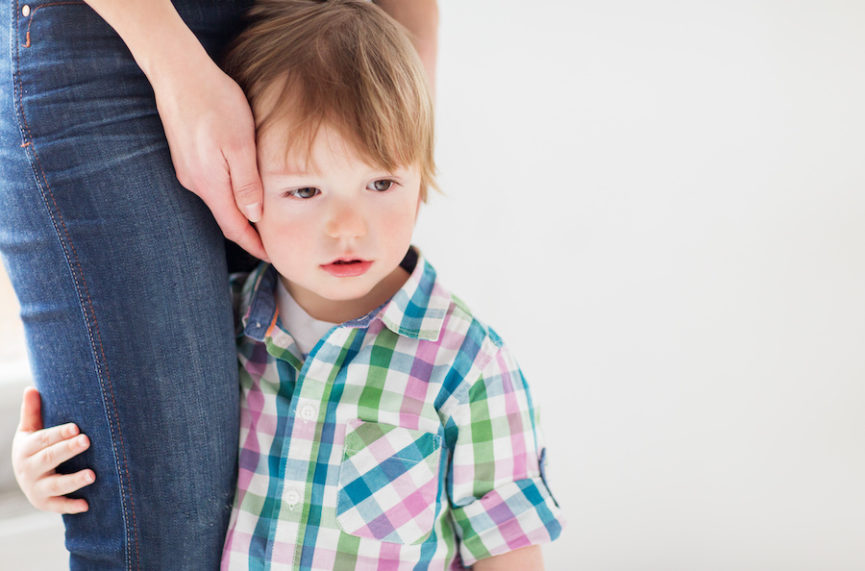
Don’t children grow out of separation anxiety? Is it really a big deal?
The good news is that most children do have less separation anxiety as they get older. One study found that even over the course of 18 months, 80% of 5 to 7 year old children with separation anxiety improve and 60% are entirely better (without symptoms) – and this is without any formal intervention or treatment.
On the flip side however, 40% of children with separation anxiety will still struggle 18 months later. Furthermore, even if children with separation anxiety do get less anxious about separation as time goes on, they may also experience other longer term mental health problems. One study found ¾ of children with separation anxiety developed another mental health disorder in young adulthood.
This suggests it may be important for us to work on separation anxiety early.
Some authors also theorise that treating and intervening early may prevent problematic patterns of neurological development. Their argument is that excess anxiety in children may be linked to accelerated development of pathways and structures associated with fear in the long term – and therefore, in contrast, intervention might stop this from occurring.
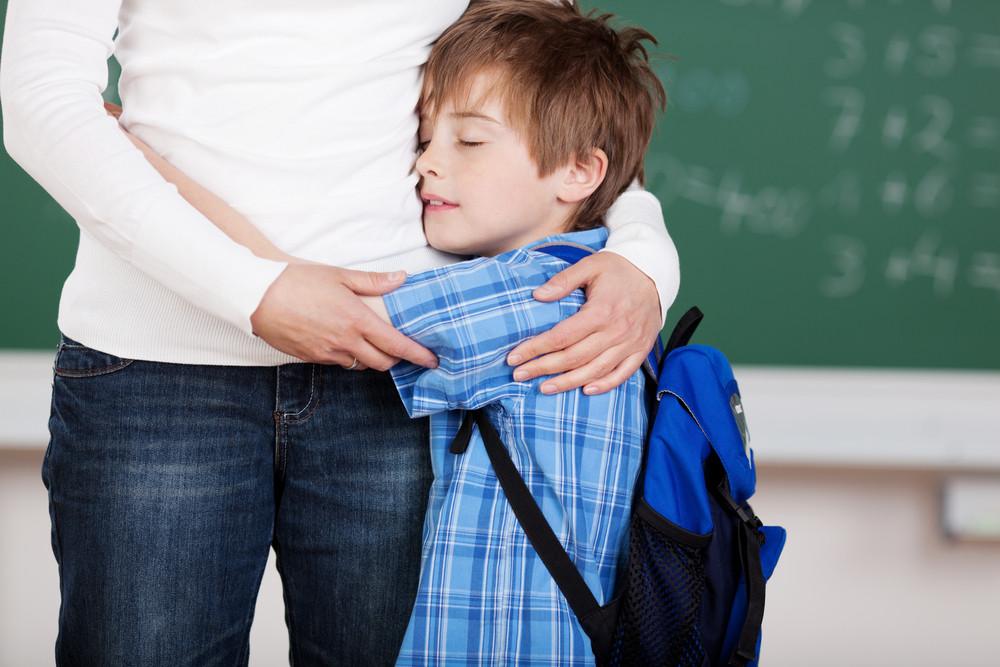
Ideas to help children with separation anxiety
Evidence based treatment for separation anxiety used by psychologists has a few key components. Here is an overview of these components – with some ideas about how parents/caregivers might be able to introduce this idea to their child themselves.
Please note however, if your child has severe separation anxiety, you may need see your GP or a psychologist to help you work through these steps. Please don’t use this article for a substitute for getting therapeutic help. Some of the steps might not be right or work for you.
- Explain separation anxiety and why it is important to work on having “big kid” time
It is important for children to understand what anxiety is and what is happening to them when they feel anxious. We need to explain this to them in simple language (see below for sentence ideas which might be helpful). Sometimes this requires several conversations with children, and to use visual information (like drawings and posters) while we are talking.
I know you don’t like it when I/we are not there. This is called feeling anxious or worried. When this happens your heart beats fast, you have worried thoughts and you want to hold on to us. Sometimes you feel angry, and feel sick. This is what happens when people feel anxious or worried. Feeling anxious doesn’t hurt your body but it doesn’t feel very good.
It is also vital that children know it is important for them to practice and work on being less anxious slowly over time and that not working on this can make things worse for them over time. For example, in the clinic we draw a “loop” diagram with arrows to show that when we feel anxious we then (understandably) avoid scary situations, but that avoiding these situations makes us feel MORE anxious as time goes on. We also come up with lists of positive reasons for children to practice acting bravely so they have more motivation to do this work. We might use sentences like:
It is not your fault when you feel anxious and it happens to lots of people. But it is important to work on coping better with your worry. We need to help you feel and acting bravely without us there as you get older. It is good for kids to have “big kid time” when they are away from their mums and dads and caregivers and with other safe people.
When we tell children about these ideas we need to make sure our tone of voice, expressions on our face and body language tells them both that we care about them AND that we are in charge and not worried about them. If children sense either that we don’t care very much OR that we are really, really worried about their anxiety – then this can make anxiety higher.
- Help children identify calm thoughts
One of the ways to help children feel less anxious is to help them identify and practice saying “calm thoughts” before they have to be apart from parents, which they can then use. This might involve us writing sentences, or drawing pictures (or using clay or other materials) to represent these sentences. For example, we might say things like:
Calm thoughts are things we can say or remember when we feel worried. We can write/draw some calm thoughts which you can use when you are anxious about us not being there. For example, let’s think of some calm thoughts like:
I will be okay without mum/dad because…………
Mum/Dad will be okay without me because………….
There are good things about me being apart from Mum/Dad which are……………
I can cope when I am ………………. Because………………..
If I feel anxious I can do ……………..which will help me
- Help children learn to relax their bodies
It is usually helpful for children to relax their bodies when they are anxious, as this usually results in less anxiety. Often children have to “practice” relaxation strategies before they are highly anxious so they can use them. This means teaching children to “make their muscles floppy” and “do slow breathing”. It then means regularly practicing these strategies and then when they are skilled at doing them in neutral situations, reminding them to use them when they are anxious.
For example, we might say things like:
If we can make our bodies relaxed, this often makes us less worried. We can make our bodies relaxed by making our muscles floppy, and breathing a little bit slower. We can practice floppy muscles and slow breathing every night before bed for a while. When you are really good at relaxing our bodies, you can do this when you are going to be away from me/us.
- Help children to use distraction and “busy brain” plans
An important strategy for children to manage separation anxiety is to help them redirect their attention on to other topics.
Thinking about or focusing on other activities or topics “activates” other systems and regions of the brain other than those involved in anxiety and threat and helps children feel calmer. We need to help children develop a plan for what they will do to focus their attention on interesting activities and topics while they are separated from mum and dad. I call this a “busy brain” plan and make sure this is in writing and practiced repeatedly with families before children practice being away from them. For many children, the most active type of distraction is social interactions.
For example, some sentences involved in this might be:
When we think about and do interesting things, this helps us feel calmer. We can make a “busy brain plan” with some activities or topics you can do when you are away from us/me. Let’s write/draw some ideas, what will be the first thing you do to keep your brain busy after you say goodbye at school in the morning? Who will you talk to/do something with first?
- Exposure (Helping children act in brave ways)
One of the most important parts of helping children to feel less anxious is simply making sure they have opportunities to practice being apart. Psychologists call this “exposure” and it is simply when we ask children to ‘face their fears’ and practice being apart from their parents for short and regular periods of time.
This is of course easier said than done – especially if you have an extremely anxious child. However, all the talking/reassuring/relaxation/use of distraction doesn’t help unless children are placed in a position where they need to practice these strategies.
Exposure generally works best however when it is very regular – ideally daily or even multiple times per day. Regular practice is better than long periods of practice. In addition, children need to practice acting bravely (ie saying a positive goodbye, keeping their brain busy, using their calm sentences and relaxing their body) rather than just “enduring” and waiting for the clock to run down. Here are some sentences we might use.
We will do little practices of you having time apart from me/us to teach your brain that you are safe and help you act bravely. You can use all your ideas to help you feel calm. I know you might feel anxious but remember when we ACT brave, even when we are feeling anxious, our brain starts to learn that everything is okay. We will do LOTS of practices, but they can be short. We can tick off every practice you do on this paper so you can see how you are going.
If we do all this, will it help?
Most children with separation anxiety who get the kind of treatment described above feel less anxious. One study found 90% of 5-7 year old children significantly improved and 76% of them no longer met criteria after receiving treatment and support for anxiety. Another study found (over 20 sessions) found 60% of children improved so much that they didn’t meet the criteria for a diagnosis of separation anxiety (compared to 20% of children who didn’t get any treatment).
As you can see, there are many ways adults can help children with separation anxiety. Sometimes this work can be done by parents/caregivers – but sometimes it is a good idea to have another person support the child too – a teacher, GP, psychologist, school counsellor, SSO, chaplain or family relative/friend.
All the best for helping your child through this sometimes very tough challenge.
ABOUT DEVELOPING MINDS

Children and teens experience tough times just like adults do. They feel sad, worried, stressed, angry, frustrated and overwhelmed. They don’t quite know how to cope with stress, they need help learning to act in positive ways, they struggle with relationships and benefit from support in many other ways.
Developing Minds specialise in helping children and teens – and the people who support them. For nearly 20 years, Developing Minds Psychology and Education has cared for, supported and worked with thousands of South Australian children and young people. Working with children ranging from the age of 4 through to 17, the team are fully qualified child psychologists and work with children and teens, and then depending on their age, also with their parents. If appropriate we also work with schools and other supports. We have two clinics in Adelaide (city and south).



